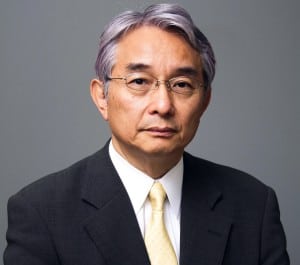Latest News
[Via Satellite 08-10-2015] Japan-based Broadcasting Satellite System Corporation (B-SAT) intends to ramp up its progress toward 4K and 8K transmissions when its newest satellite, BSAT 4a, comes online. The operator purchased the satellite from Space Systems Loral (SSL) earlier this month to replace BSAT 3a.
“BSAT 4a has an important role of maintaining the current [Digital Broadcast Satellite] DBS broadcasting in the [Integrated Services Digital Broadcasting-Satellite] ISDB-S format as the successor to BSAT-3a,” Takashi Yabashi, president and CEO of B-SAT, told Via Satellite. “BSAT 4a is also planned to be used for delivering 4K/8K Ultra-HD TV services directly to homes, for which regular service is scheduled to start in 2018. For the time being, how many broadcasters will start the new services is unknown. B-SAT wants to do its best to maximize the number of broadcasters who commence the 4K/8K Ultra-HD TV services, which have higher definition (four times and 16 times the resolution of HD TV) and more versatile functions compared to current HD TV services.”
B-SAT’s main shareholders are NHK, WOWOW, and five commercial terrestrial broadcasters in Tokyo. The operator’s mission is focused on providing domestic Broadcasting Satellite Service (BSS) specifically targeting the Japanese market. Yabashi said BSAT 4a will have the same service area as its predecessor from the BSAT 3 series, but will be more powerful, with 24 transponders in Right Hand Circular Polarization (RHCP) and Left Hand Circular Polarization (LHCP) compared to BSAT 3a’s 12 in RHCP only. The new satellite, expected to launch in 2017, will provide room for the company to grow its services. Yabashi said B-SAT is preparing to build up its ground systems infrastructure to prepare as well.
“B-SAT has already had two uplink stations to achieve the full redundancy to cope with the rainfall attenuation of the uplink signals. B-SAT has built a third uplink station to further improve the robustness of the uplink system this year. We are also going to build a control facility for BSAT-4a. The uplink facilities for the 4K/8K UHDTV services are also planned to be built,” he said.
Japan is one of the leading places for 4K and 8K. Carl Hibbert, lead analyst for television at Futuresource Consulting, told Via Satellite that the country’s rise to the top in the quest for higher quality broadcasts could be traced to B-SAT’s primary shareholder.
“In one word: NHK. It continues to be a world leader in broadcast technology development, working both on its own projects and joint initiatives with many of the world’s leader game changers (broadcasters, tech vendors, pay-TV operators) around the world,” he said.
NHK conducted an 8K Ultra-HD demo broadcast last May at its NHK Science and Technology Research Laboratories open house, showing the total system from program production, to transition, to reception. Yabashi said the experiment used the BS-17ch transponder of BSAT 3b, with the satellite operator providing transponder and uplink service. More testing is soon to follow.
“The test broadcasts of 4K/8K UHDTV will start in 2016. B-SAT is preparing for them,” he said.
The Japanese video market is unique compared to other mature markets. Joanna Wright, Futuresource’s senior market analyst for video, said the transition to digital video has been relatively slow thanks to the strength and continued affinity for packaged media and the popularity of Free-to-Air (FTA), basic Pay-TV and ad-funded services from YouTube, NicoNico, and GyaO.
“However, overall digital spend is witnessing healthy growth — over 30 percent in 2014 to over 80 billion yen (approximately $64 million), with a further 20 percent growth expected in 2015,” she said, attributing Subscription Video on Demand (SVoD) services as the primary driver of digital video growth.
“Total DTH households have seen decline the past few years driven by the continued growth of cable homes,” added Hibbert. “At year end 2014 there were 10.2 million households reliant on DTH (6.1 million were paid for services). Over the next five years, pay-DTH is expected to witness moderate growth of approximately 2 percent Calculated Annual Growth Rate (CAGR). [Digital Terrestrial Television] DTT is the primary viewing platform for approximately 3.5 million households remaining relatively stable over the forecast period (five years).”
The number of BSS digital broadcasting receivers in Japan this year surpassed 140 million. Yabashi said B-SAT broadcasts 39 programs — 28 in HD, eight in SD, two for data, and one for audio — from NHK and 21 other broadcasters. He described 2015 as a very productive year.
Get the latest Via Satellite news!
Subscribe Now